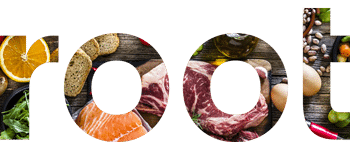
Here’s something to boggle the mind: Google processes over 40,000 search queries per second – that’s 3.5 billion searches per day! Why is that? Because it is a fast and reliable way to get answers to a question. Within seconds of thinking of a question, you can type in a search and generate a list of information to quench your hunger for knowledge (or at least, the number for your local pizza delivery.)
We don’t have to tell you that this instant access to information gives brands the opportunity to build relationships with their customers, or potential new customers.
Unlike “push marketing” tactics that are devised to interrupt your audience and catch their attention while they are doing something else, content marketing helps people find you when they are already interested in what you have to offer them. That translates into customers who are more likely to make a purchase of your product or service.
Our clients often ask us what content they should be sharing to get the most impact from their content marketing efforts. Just for you, we created this quick and dirty guide to content marketing with the top nine tips guaranteed to improve your content performance.
1. Take an audience-centered approach.
Figure out who your audience is and create content to answer their burning questions. Who is your audience and what do they care about? A great place to start is by looking at the questions, comments, or complaints that you most often get from customers and prospects. Think about how you can create and use content that solves the problem or directs them to a solution.
2. Avoid the hard sell.
This is information that should answer your audience’s questions and solve their problems. Again, it’s about them. Step into your customers’ or potential customers’ shoes and ask yourself, “Is this helpful?” Great content marketing should feel generous. You are giving your audience value.
3. Create headlines and a lead sentence that grabs the attention of your reader.
Believe it or not, the most important part of your content is the headline. There is a lot of noise out there. Your headline is the hook that will grab your reader’s attention. Try to deliver on the promise of your headline in the first sentence and deliver big.
4. Make sure your content is “scannable.”
Use headers, sub-headers, lists, and images to help your audience grasp the key concepts quickly. They’re more likely to dive into the details once they have seen that the scanned content is relevant and valuable.
5. Keep paragraphs under 5 lines.
In fact, use five line paragraphs sparingly. Long paragraphs feel overwhelming and make it harder for readers to take in information.
6. Optimize your content for SEO.
Stated more simply, make it easy for search engines to find the information you’ve posted. Search engines work by crawling the web and searching for answers that most closely match the query.
You can help search engines choose you by following these simple steps:
- Use keywords in your title.
- Add subtitles that use long-tail keywords.
- Match the URL to your title whenever possible.
- Add meta descriptions that summarize the content of your piece.
- Web crawlers cannot see pictures. They only read text, so don’t forget to use alt tags and captions to tell web crawlers what the images are that you have added to your content page.
7. Post consistently.
There’s no “one size fits all” approach to content frequency, the answer depends on your audience’s preference and your team’s capacity. Large organizations with lots of areas of expertise may want to post several times a day. Smaller companies with a specialty focus may post daily, weekly or even every other week.
Place your emphasis on quality and consistency of your content. If you need help finding the right rhythm, let us know, we’re happy to help.
8. Share your content strategically.
We had you start by thinking about your audience. Now that you have crafted this piece just for them, it’s time to figure out where to serve it to help potential customers find it. Definitely share it on your own platform/s. That could be your website, Facebook, or Instagram – but don’t stop there.
Think like a relationship-builder. Do you have existing partners who could gain value by sharing your message to their audience? Are there new alliances you could forge through collaboration to broaden your reach?
9. Measure your performance so you can continue to learn and improve.
Begin with the question, “Why am I creating this content?” That will help you understand what to measure. Are you focused on driving traffic to your website? Track your site visitors in Google Analytics. Are you interested in growing your community? Track social shares. Or maybe you want to get right to the point and find out how this translates into sales. You can do that, too, by setting up appropriate tracking systems and goals. For more details, read this excellent article by Jodi Harris on Content Marketing Institute’s website here.
The world of content marketing is big and bright! When done well, content marketing can grow your community and drive sales for your business. If you are interested in learning more about how content marketing can boost your business, contact us to see how we can help. Watch this space for an upcoming blog on how we can help you become known as a thought leader.







